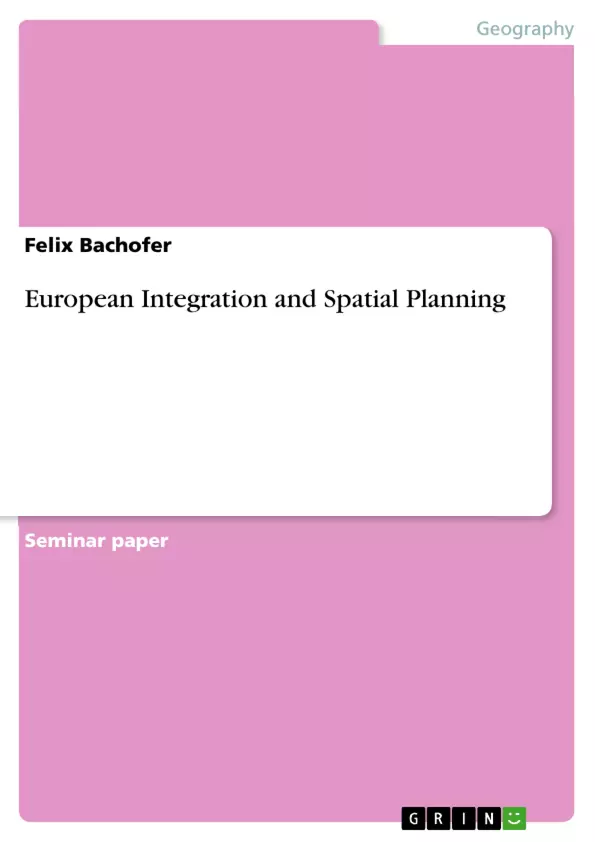„European Integration“describes a process, which tries to build up a kind of political, and economical union as well as a social and political integration of different persons and population groups within the European Union (SCHUBERT/KLEIN 2003:43). This is a very short definition of a very complex procedure which contains a lot of different aspects. One of these aspects is the spatial planning, which importance is strongly rising. On the one hand is the European Union with its 25 member states, with a population of 455 Million, with an area of nearly four Million square kilometre and a GDP (Gross Domestic Product) of 9738 billion Euro (WIKIPEDIA 2005) one of the biggest and strongest economic areas in the world, but on the other hand are the regional differences between the countries and also within the countries enormous. Following illustration shows the disparities in the year of 1997. These disparities have enlarged with the joining of the ten new member states.
Inhaltsverzeichnis (Table of Contents)
- Introduction
- Institutions of the European Spatial Development Policy
- Methods and Tools
- ESDP - European Spatial Development Perspective
- Interreg III
- Structural Funds
- The trans-European networks (TENS)
- Binding directives on environmental issues
- Conclusion
- References
Zielsetzung und Themenschwerpunkte (Objectives and Key Themes)
This essay examines the influence of the European spatial planning system on the member states of the European Union. It aims to understand the extent of this influence and the tools and methods employed to support regional development within the EU.
- The role of spatial planning in European integration.
- The institutions and policies shaping European spatial development.
- The methods and tools employed to promote sustainable spatial development within the EU.
- The challenges and opportunities presented by regional disparities and the need for balanced development.
- The importance of intergovernmental cooperation and the principle of subsidiarity in spatial planning.
Zusammenfassung der Kapitel (Chapter Summaries)
- Introduction: This chapter introduces the concept of European integration and highlights the growing significance of spatial planning within this context. It discusses the challenges posed by regional disparities within the EU and the need for effective spatial planning strategies.
- Institutions of the European Spatial Development Policy: This chapter delves into the various institutions involved in European spatial development policy, including CEMAT, informal Councils of Ministers, the Directorate-General for Regional Policy, the CSD, and the CDRR. It explores their roles and responsibilities in promoting spatial planning across the EU.
- Methods and Tools: This chapter examines the methods and tools employed by the EU to influence and support spatial planning in its member states. It focuses on the European Spatial Development Perspective (ESDP), Interreg III, Structural Funds, trans-European networks (TENS), and binding directives on environmental issues.
Schlüsselwörter (Keywords)
This essay focuses on key concepts such as European integration, spatial planning, regional disparities, sustainable development, intergovernmental cooperation, the principle of subsidiarity, and the various institutions and policies involved in shaping European spatial development. It explores methods and tools like the ESDP, Interreg III, Structural Funds, and trans-European networks as crucial aspects of the EU's spatial planning system.
- Citar trabajo
- Felix Bachofer (Autor), 2005, European Integration and Spatial Planning, Múnich, GRIN Verlag, https://www.grin.com/document/53771



